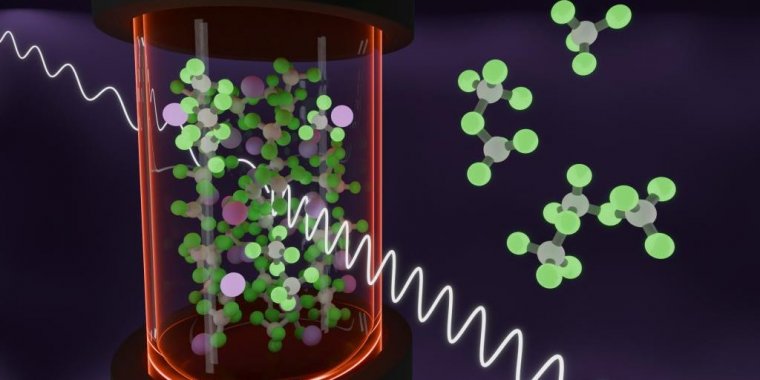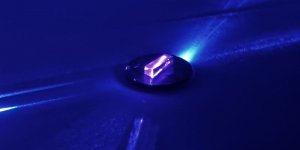| Science |
Decoding reactive species in molten salts
By unraveling vibrational signatures and observing ion exchanges, an Oak Ridge National Laboratory team revealed how chemical species form in a highly reactive molten salt mixture of aluminum chloride and potassium chloride.

An ORNL study tracked speciation in reactive molten salt mixtures using theory-based modeling and simulated Raman spectroscopy. Experimental data validated the findings. Photo: Luke Gibson/ORNL, U.S. Dept. of Energy
Mixtures of chloride salts are often used in electrochemical studies essential in understanding battery performance. Determining chloride’s basicity is crucial for developing corrosion-resistant materials.
“Understanding the behavior of molten salts in reactive environments is very challenging,” said Chemical Separations group lead Vyacheslav Bryantsev.
To overcome this challenge, the team used supercomputing to carry out nanoseconds of electronic-level simulations, showcasing how reactive species form, evolve and break over time.
Santanu Roy, who co-led the work, said, “Modeling of vibrational spectra allowed us to determine the distribution of key ionic species in the salt compositions more precisely than other methods, while a rate theory of ion exchange helped us better understand how and at what rate ions reorganize to form new species.”
YOU MAY ALSO LIKE





